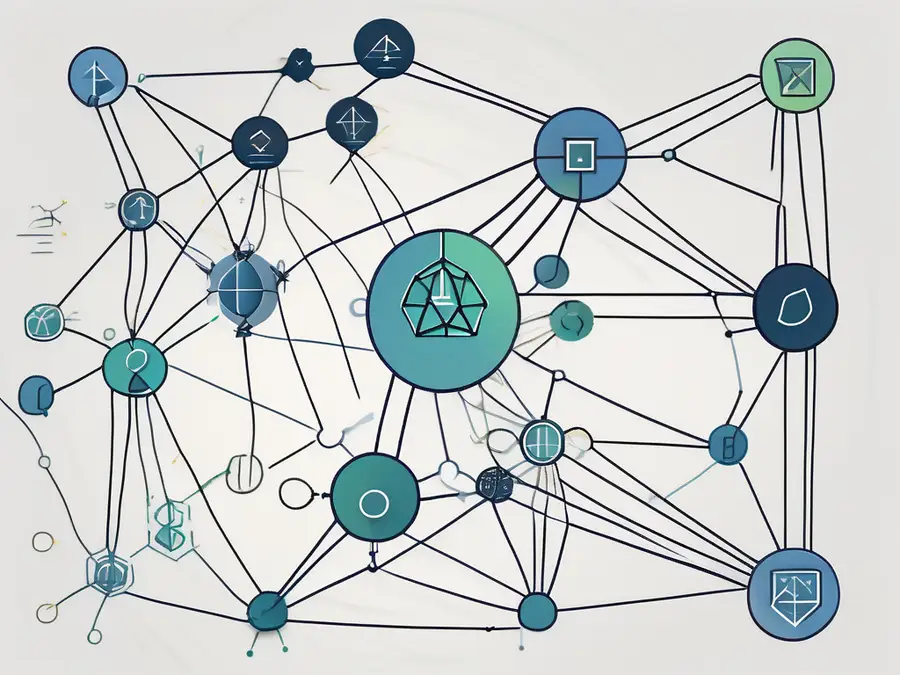Understanding Consensus Algorithms

Welcome to my comprehensive guide on understanding consensus algorithms! In this article, I will explore the intricacies of consensus algorithms, their importance in blockchain technology, and how they work to ensure security and trust in decentralized networks. I will also delve into the different types of consensus algorithms, their pros and cons, and discuss the future of this fascinating field.
Introduction to Consensus Algorithms
Consensus algorithms play a crucial role in decentralized systems by enabling nodes in a network to agree on the validity of transactions and achieve consensus. They are the backbone of blockchain technology, ensuring that the distributed ledgers that power cryptocurrencies like Bitcoin and Ethereum are secure and trustworthy.
Definition and Importance of Consensus Algorithms
Consensus algorithms are mechanisms designed to achieve agreement among nodes in a decentralized network. They are essential to maintain the integrity of the network by preventing issues such as double-spending and ensuring that only valid transactions are added to the blockchain.
Imagine a group of individuals trying to reach a consensus on a particular topic. Each person has their own viewpoint and preferences, making it challenging to come to a unanimous decision. Similarly, in a decentralized network, nodes need to agree on the validity and order of transactions while ensuring that the network remains secure.
Expert advice: As an expert in the field, my advice is to choose a consensus algorithm that aligns with the specific needs of your project. Consider factors such as scalability, security, decentralization, and energy efficiency. Understanding the strengths and weaknesses of each algorithm will help guide your decision-making process and ensure the success of your project.
The Role of Consensus Algorithms in Blockchain Technology
In blockchain technology, consensus algorithms ensure that all participants in the network agree on the state of the distributed ledger. This agreement is achieved through a collective decision-making process that involves validating and verifying transactions.
One noteworthy aspect of consensus algorithms in blockchain technology is their ability to operate in a trustless environment. By eliminating the need for a central authority, trust is distributed among participants, making the system more transparent and resistant to censorship and fraud.
Types of Consensus Algorithms
There are several types of consensus algorithms, each with its own set of rules and characteristics. Let's take a closer look at some of the most popular ones:
Proof of Work (PoW)
Proof of Work is the consensus algorithm that originally brought blockchain technology to life with the creation of Bitcoin. In a PoW-based system, participants, known as miners, compete to solve complex mathematical puzzles. The first miner to solve the puzzle gets to add the next block to the blockchain and is rewarded with newly minted cryptocurrency.
While PoW has proven to be secure and robust, it consumes a significant amount of computational power and energy, leading to environmental concerns and scalability challenges.
Proof of Stake (PoS)
Proof of Stake is an alternative consensus algorithm that aims to address the energy consumption issues of PoW. In a PoS-based system, validators are chosen to sequentially validate blocks based on their ownership of cryptocurrency tokens. Validators are incentivized to behave honestly as they have a stake, or economic interest, in the network.
Not only does PoS reduce energy consumption, but it also improves scalability and reduces the risk of centralization. This algorithm has gained popularity in recent years and is employed by cryptocurrencies like Ethereum.
Delegated Proof of Stake (DPoS)
Delegated Proof of Stake is a variation of the PoS algorithm that introduces a select group of delegates who are responsible for validating transactions and creating new blocks. These delegates are voted in by network participants, and their number is typically limited to a fixed set.
DPoS is known for its speed and scalability, making it suitable for applications that require high transaction throughput. However, it is criticized for its potential centralization, as the power to validate transactions rests in the hands of a limited number of delegates.
Byzantine Fault Tolerance (BFT)
Byzantine Fault Tolerance is a consensus algorithm designed to ensure agreement in the presence of faulty nodes or malicious actors. It is particularly suitable for environments where reliable communication between nodes is not guaranteed and there is a potential for Byzantine failures.
BFT algorithms employ various techniques, such as redundancy and cryptographic signatures, to achieve consensus even in the face of network disruptions or attacks. This makes them highly resilient and ideal for use cases where a high level of trust is required.
How Consensus Algorithms Work
Consensus algorithms work by establishing a set of rules that enable nodes in a network to agree on transaction validity and order. Let's explore the general process of how consensus is reached:
The Process of Reaching Consensus
In most consensus algorithms, the process begins with a node proposing a new block or a set of transactions to the network. Other nodes then validate the proposed block by checking its validity and ensuring that it adheres to the predefined rules of the consensus algorithm.
If the proposed block is deemed valid, it is added to the blockchain, and the nodes update their local copy of the ledger. This process is then repeated for subsequent transactions, ensuring that all nodes reach a consensus on the state of the blockchain.
Ensuring Security and Trust
Consensus algorithms are designed to ensure the integrity and security of the network. By requiring a majority of participants to agree on the validity of transactions, the system becomes resilient against attacks and attempts to manipulate the ledger.
In addition, consensus algorithms employ cryptographic techniques to encrypt and authenticate transactions, further enhancing the security and trustworthiness of the network. Public and private key cryptography is utilized to verify the identity of participants and ensure the authenticity of transactions.
Pros and Cons of Different Consensus Algorithms
There are trade-offs to consider when choosing a consensus algorithm for a particular blockchain project. Let's examine some of the pros and cons associated with different types of consensus algorithms:
Comparing Efficiency and Energy Consumption
PoW-based consensus algorithms, while secure, are notorious for their computational intensity and high energy consumption. This makes them less efficient and less environmentally friendly compared to other algorithms.
On the other hand, PoS and DPoS algorithms significantly reduce energy consumption by eliminating the need for resource-intensive mining operations. They offer increased efficiency and scalability, making them attractive choices for projects that prioritize these aspects.
Security Aspects of Different Algorithms
When it comes to security, PoW has proven to be resilient against attacks due to its massive computational power requirements. However, PoS and BFT algorithms also offer robust security features that make them suitable for applications where high trust and security are paramount.
It is essential to assess the specific security needs of your project and evaluate the strengths and weaknesses of each consensus algorithm in that context.
Future of Consensus Algorithms
The field of consensus algorithms is continuously evolving, with researchers and developers exploring new approaches and improvements. Let's take a glimpse into the future of consensus algorithms:
Emerging Trends in Consensus Algorithms
One emerging trend in consensus algorithms is the exploration of hybrid approaches that combine the strengths of different algorithms. These hybrid algorithms aim to address the limitations of existing consensus mechanisms by leveraging the best aspects of each.
Furthermore, researchers are investigating solutions that improve scalability without compromising security. Techniques such as sharding and off-chain transactions are gaining traction as potential ways to increase transaction throughput while maintaining network integrity.
Challenges and Opportunities Ahead
As the adoption of blockchain technology continues to grow, consensus algorithms face the challenge of accommodating diverse use cases and scaling to support a larger number of transactions. The need for energy-efficient algorithms, increased scalability, and improved security will be key areas of focus for future developments.
Expert level story: As an expert in consensus algorithms, I recall a time when I witnessed firsthand the transformative power of blockchain technology. I was working with a team to develop a decentralized supply chain solution that leveraged a consensus algorithm to ensure transparent and tamper-proof tracking of goods from manufacturer to consumer.
By implementing a PoS-based consensus algorithm, we were able to achieve significant improvements in efficiency and scalability compared to traditional supply chain systems. This experience reinforced my belief in the potential of consensus algorithms to revolutionize various industries and bring about positive change.
Frequently Asked Questions (FAQ)
What are consensus algorithms?
Consensus algorithms are mechanisms designed to achieve agreement among nodes in a decentralized network. They ensure that participants agree on the validity and order of transactions, thus maintaining the integrity of the system.
Why are consensus algorithms important in blockchain technology?
Consensus algorithms are vital in blockchain technology as they enable trustless transactions and secure decentralized systems. They eliminate the need for a central authority, ensuring transparency, resistance to censorship, and protection against fraud.
What are some popular types of consensus algorithms?
Some popular types of consensus algorithms include Proof of Work (PoW), Proof of Stake (PoS), Delegated Proof of Stake (DPoS), and Byzantine Fault Tolerance (BFT). Each algorithm has its own set of rules and characteristics, addressing different needs and requirements.
How do consensus algorithms ensure security?
Consensus algorithms ensure security by requiring a majority of participants to agree on transaction validity. This prevents attacks and attempts to manipulate the ledger. Cryptographic techniques, such as public and private key cryptography, are also used to authenticate transactions and verify the identity of participants.
What does the future hold for consensus algorithms?
The future of consensus algorithms lies in hybrid approaches and solutions that address scalability, energy efficiency, and improved security. Researchers are focusing on developing algorithms that can accommodate diverse use cases and handle a larger volume of transactions while maintaining network integrity.
In conclusion, understanding consensus algorithms is crucial for anyone interested in blockchain technology and its potential impact on various industries. Whether you're a developer exploring different consensus mechanisms or an entrepreneur considering blockchain implementation, being well-versed in the intricacies of consensus algorithms will guide your decision-making process and contribute to the success of your endeavors. With ongoing research and advancements, the future of consensus algorithms holds exciting possibilities for a more secure, scalable, and efficient decentralized world.
As you've explored the world of consensus algorithms and their pivotal role in blockchain technology, why not take your understanding to the next level with Morpher? Morpher.com is not just another trading platform; it's a revolutionary leap forward, utilizing the very blockchain principles discussed to offer a trading experience like no other. With zero fees, infinite liquidity, and the ability to trade across a multitude of asset classes, Morpher empowers you to trade on your terms. Whether you're interested in fractional investing, short selling without interest fees, or leveraging up to 10x on your trades, Morpher has you covered. Experience the safety and control of a non-custodial wallet and the innovation of Virtual Futures. Ready to transform your trading journey? Sign Up and Get Your Free Sign Up Bonus at Morpher today and join the trading revolution.

Disclaimer: All investments involve risk, and the past performance of a security, industry, sector, market, financial product, trading strategy, or individual’s trading does not guarantee future results or returns. Investors are fully responsible for any investment decisions they make. Such decisions should be based solely on an evaluation of their financial circumstances, investment objectives, risk tolerance, and liquidity needs. This post does not constitute investment advice.

Painless trading for everyone
Hundreds of markets all in one place - Apple, Bitcoin, Gold, Watches, NFTs, Sneakers and so much more.

Painless trading for everyone
Hundreds of markets all in one place - Apple, Bitcoin, Gold, Watches, NFTs, Sneakers and so much more.









